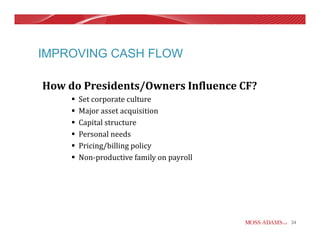

Therefore, the net present value becomes negative. In this case, the investment project is rejected, However, for it to happen, the present value of the cash inflow should be less than the cash outflow’s present value. Consequently, the net present value turns out to be positive. However, for the same to happen, the present value of the cash inflow should be greater than cash outflow. Positive Net Present Valueįirst of all, in this case, the investment project is acceptable. Therefore, there are three possibilities of a net present value. Furthermore, this is primarily the result of the different projects taken up on investments. The difference in the values of cash inflow and cash outflow is termed as net present value. Hence, a +ve net present value is likely to add to the worth of the company. It gives a clear sign to the company and probably tells about the value it will add to the company in the coming time. As a result, the clear picture comes forward. Net present value is generally used to find out the decision behind any investment. If Net Present Value is less than 0, then reject the proposal.

If Net Present Value is greater than 0, accept the proposal.The negative value indicates that it might not be a wise idea for company “A” to but company “B.” Decision Rule Therefore, we can simply use the formula to calculate the net present value. The total cash flow for the coming 10 years is now in the bucket. The present value of cash flows for 10 years are as follows. Solution: The cost to buy company “B” at the present time – Rs. Net Present Value = Z 1/(1+r)+Z 2/(1+r) 2 – X 0Ī simple example to make the concept of net present value clear.Įxample 2: A company “A” wants to buy another company “B.” Before buying, company “A” looks for the projection of company “B” for the coming 10 years. The formula to calculate net present value is: Finally, add all the present value of cash flow.This is called the present value of the cash flows. This is to be done by multiplying the discount factors with the cash flows. Now, calculate the present worth of net cash flows.For the rate of return, calculate the discounted factor for each and every year.Furthermore, select the rate of return.In every year of investment, calculate the net cash inflow.Here are simple steps to calculate the net present value: Net Present Value = Cash inflow of present value – Cash outflow of present value Net Present Value = Cash Inflow of present value – Total net investmentįurthermore, there is a chance that there is an additional addition to the investment process. The following formula makes the meaning of net present value. The initial receipt can also be a payment process done during the start of the time span. It is more or less similar to the value of annuity regular i.e. annuity due and annuity immediate is same. Present Value = Payment 1/(1+i) + Payment 2/(1+i) 2 + Payment 3/(1+i) 3 + Payment N/(i+i) n Present Value of Annuity – Due or Immediate Here is the formula to calculate present value for “n” number of time periods. Present Value for Multiple Time PeriodĬalculating the present value for multiple periods is a useful way to calculate the earnings overall. Therefore, the growth after 2 years at an interest rate of 10% will be Rs. 10 and at an interest rate of 10% at the end of two years compounded annually? A simple example to help and better understand the concept.Įxample 1: What is the present value of Rs. The simple formula to calculate present value is as follows: Suppose, the present value (P) of some quantity (A n), at the end of the value period (n), and at an interest rate (i) is:įor i is positive (greater than 1), the value 1/(1 + i) n is negative (less than 1 ) (for different values of i and n). As mentioned earlier, present value is nothing but the current cost of the total amount of cash.


 0 kommentar(er)
0 kommentar(er)
